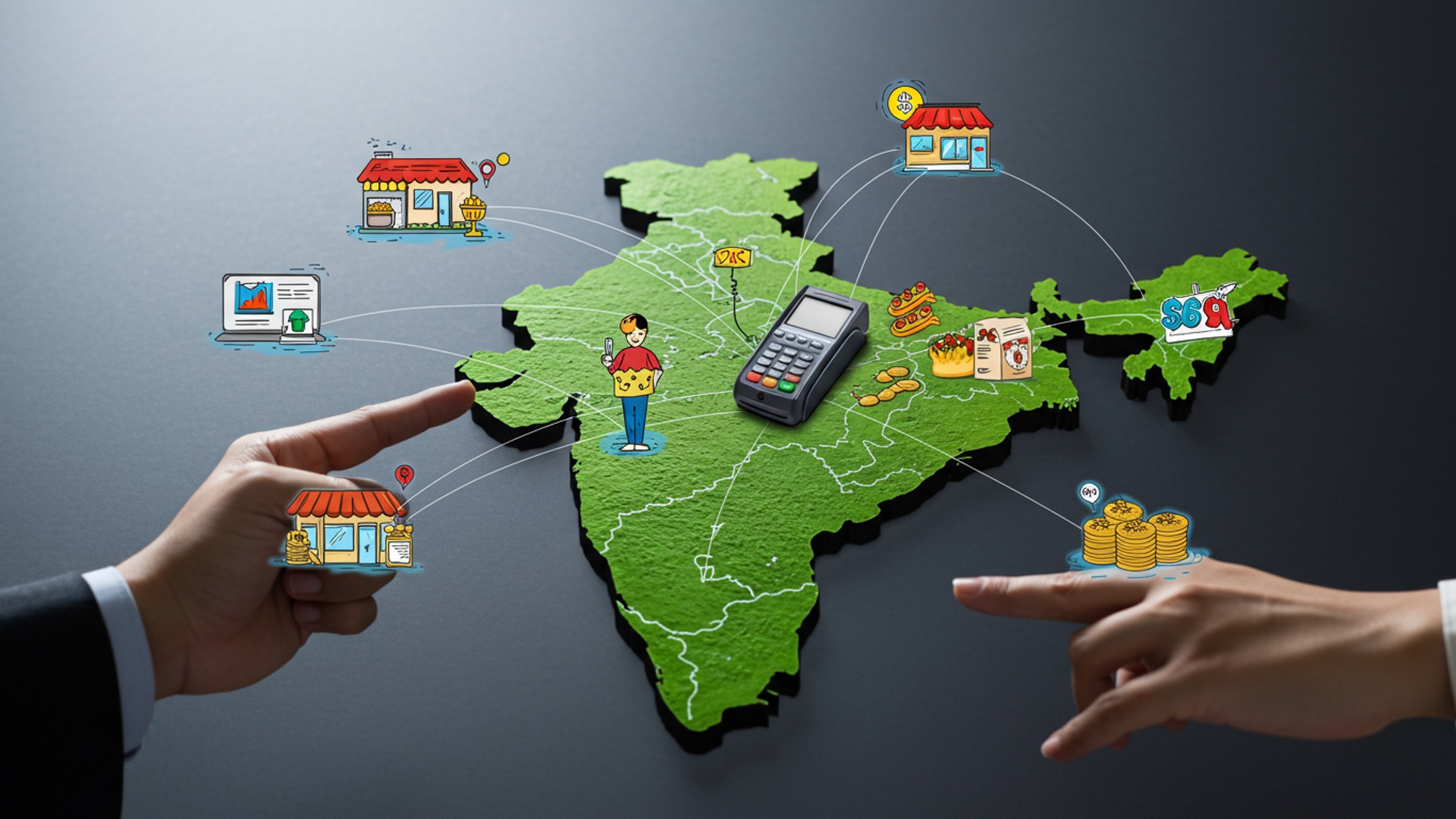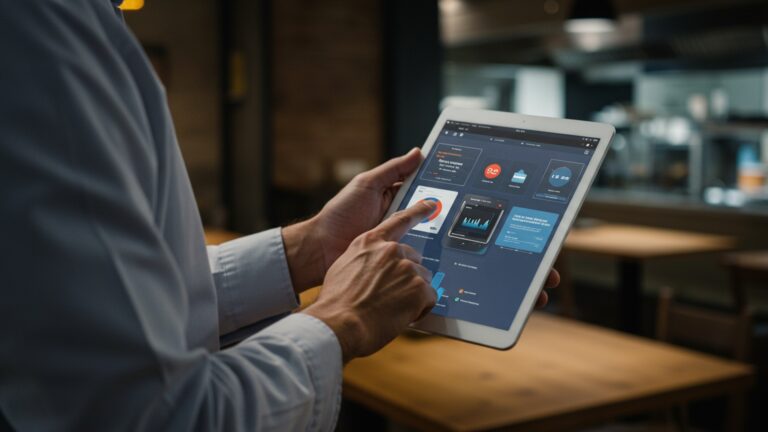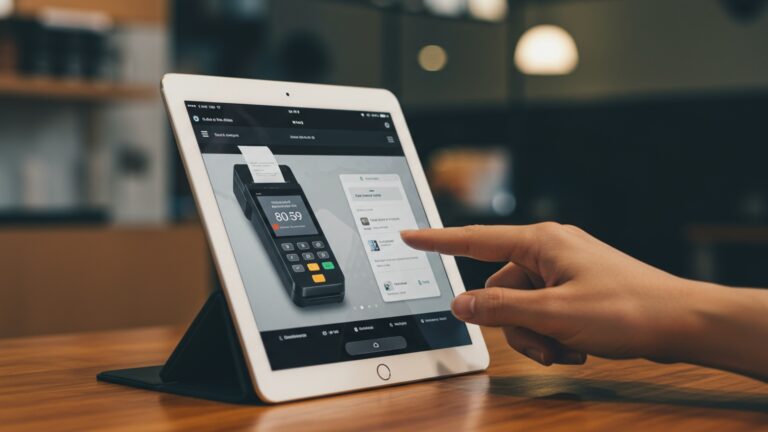Find the Best POS Software in India A Comprehensive Buying Guide
In India’s rapidly digitizing retail and hospitality sectors, merely processing transactions is no longer sufficient; businesses demand intelligent Point of Sale solutions that drive efficiency and growth. The proliferation of digital payments, exemplified by UPI’s massive adoption, combined with the complexities of GST compliance, necessitates a robust, adaptable system. Modern enterprises, from bustling QSRs to expanding retail chains, increasingly leverage cloud-based POS platforms for real-time inventory management, detailed sales analytics. seamless omnichannel integration, moving beyond traditional billing toward comprehensive business intelligence. Identifying the best POS software in India is thus a strategic imperative, impacting everything from customer experience to operational scalability in a market witnessing unprecedented technological shifts.

Understanding Point-of-Sale (POS) Software
Point-of-Sale (POS) software is the digital backbone of modern retail and service operations, transforming how businesses process transactions and manage their day-to-day activities. At its core, a POS system is where your customer makes a payment for products or services in your store. More broadly, it’s a sophisticated ecosystem that extends far beyond simple transaction processing.
A typical POS setup comprises both hardware and software. While hardware includes components like cash registers, barcode scanners, receipt printers. payment terminals, the software is the intelligent engine that orchestrates all these elements. It’s the interface your staff uses to ring up sales, the database that tracks inventory. the reporting tool that provides insights into your business performance.
Core Components and Functionalities:
- Sales Processing
- Inventory Management
- Customer Relationship Management (CRM)
- Reporting & Analytics
- Employee Management
- Integrations
The fundamental function, allowing quick and accurate ringing up of items, applying discounts, processing returns. handling various payment methods (cash, card, UPI, digital wallets).
Tracks stock levels in real-time, alerts for low stock, manages multiple locations. helps with purchase order generation, significantly reducing stockouts and overstocking.
Stores customer data, purchase history, loyalty programs. enables targeted marketing efforts, fostering stronger customer relationships.
Generates detailed reports on sales trends, employee performance, peak hours, popular products. more, empowering data-driven decision-making.
Tracks employee shifts, sales performance, commissions. access permissions, streamlining workforce administration.
Ability to connect with other essential business tools like accounting software (e. g. , Tally, Zoho Books), e-commerce platforms. third-party payment gateways.
Why Your Indian Business Needs Modern POS Software
In India’s rapidly evolving market, businesses, whether small startups or large enterprises, face increasing competition and consumer expectations. A robust POS system is no longer a luxury but a necessity for efficiency, growth. customer satisfaction. The best POS software in India can be a game-changer for various reasons:
- Enhanced Efficiency
- Improved Inventory Control
- Better Customer Experience
- Data-Driven Decisions
- Scalability for Growth
- Compliance and Security
Automates routine tasks, speeding up checkout processes, reducing manual errors. freeing up staff to focus on customer service. For instance, a quick-service restaurant can dramatically cut down order processing time with an intuitive POS.
Real-time tracking minimizes waste, prevents stockouts. optimizes purchasing decisions. Imagine a retail store knowing exactly how many units of a popular item are left across all branches, enabling timely restocking and inter-store transfers.
Faster service, personalized offers through loyalty programs. accurate billing contribute to happier customers and repeat business. A small boutique using a POS to track customer preferences can offer tailored recommendations.
Comprehensive reports offer deep insights into sales patterns, peak periods. best-selling products, allowing businesses to make informed strategic decisions regarding promotions, staffing. inventory.
As your business expands, a flexible POS system can scale with you, accommodating new stores, product lines, or increased transaction volumes without needing a complete overhaul. This is crucial for businesses aiming for multi-location expansion.
Modern POS systems often come with features to ensure compliance with local tax regulations (like GST in India) and robust security measures to protect sensitive transaction and customer data.
Key Features to Look for in the Best POS Software in India
When searching for the best POS software in India, a comprehensive understanding of essential features is paramount. Not all POS systems are created equal. the ideal choice depends heavily on your specific business needs. Here’s a breakdown of critical functionalities:
1. User-Friendly Interface (UI)
- Intuitive Design
- Customizable Layout
The software should be easy to learn and operate, minimizing training time for new staff and reducing operational errors. A cluttered or overly complex interface can slow down operations.
Ability to customize the interface to prioritize frequently used functions or products, speeding up transactions.
2. Inventory Management
- Real-time Tracking
- Batch Management & Expiry Dates
- Barcode Scanning
- Supplier Management & Purchase Orders
- Stock Transfers
Essential for knowing exactly what’s in stock at any given moment across all locations.
Crucial for businesses dealing with perishable goods (e. g. , F&B, pharmacies).
Fast and accurate product identification and pricing.
Streamlines procurement and vendor relationships.
Easily move inventory between different store locations.
3. Sales and Transaction Processing
- Multi-Payment Options
- Returns & Exchanges
- Discounts & Promotions
- Hold & Recall Orders
- Offline Mode
Support for cash, credit/debit cards, UPI, digital wallets (Paytm, Google Pay, PhonePe). EMI options, which are vital in the Indian market.
Seamless processing of refunds and item swaps.
Ability to apply various types of discounts (percentage, fixed amount), loyalty points. promotional offers.
Essential for busy environments where customers might want to add items or retrieve a previous order.
Ensures transactions can continue even if internet connectivity is lost, syncing data once online again.
4. Customer Relationship Management (CRM)
- Customer Database
- Loyalty Programs
- Targeted Marketing
Store contact details, purchase history. preferences.
Create and manage points-based, tiered, or discount-based loyalty schemes to retain customers.
Use customer data for personalized promotions via SMS or email.
5. Reporting and Analytics
- Sales Reports
- Inventory Reports
- Employee Performance
- Customizable Reports
Daily, weekly, monthly. annual sales, by product, category, employee. payment type.
Stock levels, slow-moving items, fast-moving items, COGS.
Track sales per employee, commissions. shift reports.
Ability to generate specific reports tailored to your business’s unique KPIs.
6. Employee Management
- User Roles & Permissions
- Time Clock
- Performance Tracking
Define access levels for different staff members (e. g. , cashier, manager, owner).
Track employee clock-in/out times for payroll.
Monitor individual sales performance.
7. Integrations
- Accounting Software
- E-commerce Platforms
- Payment Gateways
- CRM & Marketing Tools
Seamless integration with popular accounting platforms like Tally, Zoho Books, QuickBooks.
Sync inventory and sales data with online stores (e. g. , Shopify, Magento).
Compatibility with various payment processors and third-party payment devices.
Connect with external marketing automation or advanced CRM systems.
8. Cloud-Based vs. On-Premise
- Cloud-Based (SaaS)
- On-Premise
Accessible from anywhere, automatic updates, lower upfront cost, subscription model, better for multi-location businesses.
Higher upfront cost, full control over data, requires local IT infrastructure, might be preferred by businesses with very specific security or customization needs.
Types of POS Systems and Their Applications
The landscape of POS solutions offers diverse options, each suited to different operational scales and business models. Understanding these types is crucial in identifying the best POS software in India for your specific requirements.
1. Traditional/On-Premise POS Systems
- Description
- Pros
- Cons
- Best Suited For
Software and data are hosted locally on your own servers and computers. This typically involves a one-time license purchase.
Full control over data, potentially higher customization, no reliance on internet for core operations.
High upfront cost, requires IT expertise for setup and maintenance, updates are manual, not easily accessible remotely.
Large enterprises with dedicated IT teams and specific security compliance needs, or businesses in areas with unreliable internet.
2. Cloud-Based POS Systems (SaaS)
- Description
- Pros
- Cons
- Best Suited For
Software and data are hosted on remote servers by the vendor and accessed via the internet through a web browser or app. Operates on a subscription model.
Lower upfront cost, accessible from any device anywhere, automatic updates, easier scalability, vendor handles maintenance and security.
Requires stable internet connection (though many offer offline capabilities), data is stored by a third-party.
Small to medium-sized businesses (SMBs), multi-location businesses, e-commerce integrated businesses. those seeking flexibility and lower IT overhead. This is increasingly becoming the preferred type for the best POS software in India due to its flexibility.
3. Mobile POS (mPOS) Systems
- Description
- Pros
- Cons
- Best Suited For
Utilizes smartphones or tablets as the primary POS terminal, often paired with compact card readers or printers.
Highly portable, cost-effective, ideal for pop-up shops, food trucks, field services, or queue busting in busy stores.
Limited functionality compared to full systems, smaller screen size can be restrictive for complex operations.
Businesses on the go, service providers, small vendors, or as a supplementary system for peak hours.
4. Industry-Specific POS Systems
- Description
- Pros
- Cons
- Best Suited For
Tailored solutions with features unique to certain industries, such as specific menu modifiers for restaurants or appointment scheduling for salons.
Designed to meet precise industry demands, often includes specialized reporting and compliance features.
May be less flexible for businesses with diverse offerings, potentially higher cost for niche functionalities.
Restaurants, cafes, bars, retail stores (fashion, grocery, electronics), salons, spas, pharmacies. service centers.
Industry-Specific POS Solutions in India
While the core functionalities of POS software remain consistent, the specific features and workflows required can vary significantly across different industries. Recognizing these nuances is key to selecting the best POS software in India that truly aligns with your business operations.
1. Retail POS Software
- Key Features
- Advanced Inventory Management
- Barcode Scanning & Printing
- CRM & Loyalty Programs
- Returns & Exchange Management
- E-commerce Integration
- Use Case
Crucial for tracking thousands of SKUs, managing variations (size, color). handling multiple branches.
Essential for quick product identification and inventory updates.
To manage customer data, purchase history. offer personalized discounts.
Streamlined process for customer service.
Seamlessly syncs online and offline inventory and sales.
A multi-brand fashion retailer can use a retail POS to track inventory across several stores, manage seasonal sales. offer loyalty points to repeat customers, all while syncing with their online store for a unified shopping experience.
2. Restaurant & Food Service POS Software
- Key Features
- Table Management
- Menu Management
- Kitchen Display System (KDS) Integration
- Order Customization
- Split Bills & Group Orders
- Delivery & Takeaway Management
- Use Case
Assigning tables, tracking order status (pending, served, paid).
Easy updates for prices, dishes. modifiers (e. g. , extra cheese, no onions).
Sends orders directly to the kitchen, reducing errors and speeding up service.
Handling special requests and dietary restrictions efficiently.
Essential for dining establishments.
Integration with third-party delivery platforms.
A busy cafe in Mumbai can leverage a restaurant POS to manage table reservations, send orders directly to the bar and kitchen, process payments quickly via QR codes or integrated terminals. track peak hours to optimize staffing.
3. Salon & Spa POS Software
- Key Features
- Appointment Scheduling
- Staff Management
- Client History
- Gift Card & Package Management
- Use Case
Online booking, calendar management. automated reminders.
Commission tracking, shift management. performance monitoring for stylists/therapists.
Detailed records of services, preferences. product purchases.
Offering and tracking special service bundles.
A high-end salon in Delhi can use a specialized POS to allow clients to book appointments online, manage staff schedules and commissions, keep detailed records of client hair treatments and product usage. offer loyalty rewards.
4. Pharmacy POS Software
- Key Features
- Batch & Expiry Date Tracking
- Prescription Management
- Drug Database
- Regulatory Compliance
- Supplier Management
- Use Case
Critical for managing medicines and perishable health products.
Recording and tracking prescriptions.
Access to a comprehensive database of medicines for quick lookup.
Features to ensure adherence to healthcare regulations.
Efficient ordering from pharmaceutical distributors.
A local pharmacy needs a POS that can track the expiry dates of medicines, manage thousands of unique drug SKUs. record prescription details, ensuring compliance and patient safety.
Factors to Consider When Choosing Your POS System
Selecting the best POS software in India requires careful consideration of several critical factors beyond just feature lists. This decision will impact your operational efficiency, financial management. customer satisfaction for years to come.
1. Scalability
- Growth Potential
- Example
Will the system accommodate your business as it grows? Can it handle more transactions, new product lines, or additional store locations without requiring a complete overhaul?
If you plan to open two more branches next year, ensure the POS allows for easy multi-location management from a central dashboard.
2. Budget and Pricing Model
- Upfront vs. Subscription
- Hidden Fees
- Value for Money
interpret the difference between one-time purchase (on-premise) and monthly/annual subscription (cloud-based) costs.
Inquire about setup fees, training costs, hardware costs, payment processing fees. support charges. A seemingly cheap initial price can quickly inflate.
Don’t just pick the cheapest option. Evaluate the features, support. long-term benefits against the cost.
3. Hardware Compatibility
- Existing Hardware
- New Hardware Needs
Can the new software work with your current barcode scanners, receipt printers, or cash drawers?
If you need new hardware, does the vendor offer bundled packages or recommendations for compatible devices? Look for systems that support standard peripherals.
4. Customer Support and Training
- Availability
- Support Channels
- Training
What are the support hours? Is 24/7 support available, especially for critical issues? In India, local language support can be a significant advantage.
Phone, email, chat, knowledge base, dedicated account manager?
Does the vendor offer initial training for your staff? Are there online tutorials or documentation available?
5. Security and Data Privacy
- Data Encryption
- PCI DSS Compliance
- Backup & Recovery
- Access Control
Ensure all transaction and customer data is encrypted, both in transit and at rest.
If processing card payments, the system and vendor should be PCI DSS compliant.
How often is data backed up? What is the disaster recovery plan?
Robust user roles and permissions to prevent unauthorized access.
6. Integration Capabilities
- Essential Integrations
- API Availability
Does it integrate seamlessly with your existing accounting software (Tally, Zoho Books), e-commerce platform, or preferred payment gateway?
For custom integrations, an open API can be invaluable.
7. User Reviews and Reputation
- Online Reviews
- Case Studies/Testimonials
- Vendor Stability
Check independent review sites (e. g. , G2, Capterra, Trustpilot, specific Indian business forums) for user feedback on usability, support. reliability.
Look for businesses similar to yours that have successfully implemented the software.
Choose a vendor with a proven track record and financial stability to ensure long-term support and development.
Implementing Your New POS System and Beyond
Once you’ve identified what you believe is the best POS software in India for your business, the implementation phase is critical for a smooth transition and maximizing its benefits. This isn’t just about installing software; it’s about integrating a new operational workflow.
1. Data Migration
- Inventory Data
- Customer Data
- Historical Sales Data
- Best Practice
Carefully transfer all product details, including SKUs, prices, descriptions. current stock levels. This often involves exporting from your old system or spreadsheets and importing into the new POS.
Migrate existing customer databases, including contact data and loyalty program details.
While not always mandatory, importing historical sales can be valuable for trend analysis and continuity in reporting.
Perform a thorough data cleanup before migration. Remove duplicate entries, correct errors. standardize formats to ensure data integrity in your new system.
2. Staff Training
- Comprehensive Sessions
- Role-Specific Training
- Practice & Mock Transactions
- Documentation
- Vendor Support
Conduct dedicated training sessions for all staff who will interact with the POS, from cashiers to managers.
Tailor training to different user roles, focusing on the specific functions each person will perform.
Allow staff to practice with the system using mock transactions before going live.
Provide easy-to-interpret guides and FAQs for quick reference.
Leverage the training resources and support offered by your POS vendor.
3. Go-Live and Post-Implementation Support
- Phased Rollout (if applicable)
- On-Site Support
- Feedback Loop
- Continuous Optimization
For larger businesses, consider a phased rollout (e. g. , one department or one store first) to identify and resolve issues before a full launch.
Have key personnel or vendor support available on-site during the initial go-live days to address immediate concerns.
Establish a clear channel for staff to provide feedback on the system’s usability and any encountered issues.
Regularly review reports, gather feedback. use the system’s features to continuously optimize your operations. This might involve adjusting inventory settings, refining loyalty programs, or exploring new integrations.
4. Future-Proofing Your Investment
- Regular Updates
- Staying Informed
- Scalability Check
Ensure you are taking advantage of software updates that bring new features, security enhancements. performance improvements.
Keep an eye on evolving payment trends (e. g. , new UPI features, contactless payments) and consumer technologies in India to ensure your POS remains relevant.
Periodically reassess if your current POS still meets your growing business needs and plan for potential upgrades or expansions.
Real-World Impact: Case Studies and Examples
To truly comprehend the transformative power of the best POS software in India, let’s explore how businesses are leveraging these systems to achieve tangible results. These examples highlight the actionable takeaways and demonstrate the real-world benefits across various sectors.
Case Study 1: Modernizing a Traditional Grocery Store
“FreshBites Kirana,” a medium-sized neighborhood grocery store in Bangalore, known for its fresh produce and local specialties. struggling with slow manual billing and inaccurate inventory.
Long queues during peak hours, frequent stockouts of popular items, difficulty tracking perishable goods. no insights into customer purchasing habits.
FreshBites implemented a cloud-based retail POS system with robust inventory management, barcode scanning. integrated loyalty programs.
- Reduced Billing Time
- Optimized Inventory
- Customer Loyalty
- Data-Driven Decisions
Checkout speed improved by 40%, significantly reducing queue times and enhancing customer satisfaction.
Real-time tracking and automated reorder alerts cut down stockouts by 60% and minimized waste from expired produce. The store owner now confidently orders based on actual demand.
A points-based loyalty program, managed through the POS, saw a 25% increase in repeat customer visits within six months, with personalized offers sent via SMS based on purchase history.
Sales reports helped identify peak hours, allowing FreshBites to optimize staffing. pinpointed best-selling items, informing promotional strategies.
Case Study 2: Scaling a Multi-Location Cafe Chain
“Chai & Chat,” a rapidly growing cafe chain with 5 outlets across Pune, planning further expansion.
Inconsistent menu pricing across locations, difficulty in centralizing sales data, manual reconciliation of daily sales. no real-time view of inventory across all cafes, leading to supply chain inefficiencies.
Chai & Chat adopted a specialized cloud-based restaurant POS system designed for multi-location management, featuring centralized menu control, KDS integration. comprehensive reporting.
- Centralized Control
- Streamlined Operations
- Real-time Insights
- Faster Expansion
The head office can now update menus and prices across all 5 (and future) locations instantly, ensuring consistency.
KDS integration in each cafe reduced order errors by 30% and improved kitchen efficiency, leading to faster service.
Consolidated sales and inventory reports provided a holistic view of the business, enabling better procurement decisions and identifying underperforming outlets.
The standardized POS system made it significantly easier and faster to set up and integrate new cafe locations into their existing operational framework.
Case Study 3: Empowering a Home-Service Business
“Sparkle & Shine,” a small enterprise offering home cleaning and repair services in Hyderabad, managing appointments and payments manually.
Disorganized appointment scheduling, difficulty tracking service history for clients, manual invoicing. a cumbersome process for field agents to accept payments.
Sparkle & Shine implemented a mobile POS (mPOS) solution with integrated appointment scheduling, client management. mobile payment acceptance.
- Efficient Scheduling
- Professional Payments
- Enhanced Client Management
- Simplified Accounting
Online appointment booking and automated reminders reduced no-shows by 20% and optimized service routes.
Field agents could now accept card and UPI payments on the spot using their smartphones and a portable card reader, providing instant digital receipts and improving cash flow.
Service history and client preferences were easily accessible, allowing for personalized follow-ups and service recommendations.
Automated invoicing and integration with basic accounting software drastically reduced administrative time, freeing up the owner to focus on growth.
These examples underscore that the investment in the best POS software in India is not just about processing transactions. about building a foundation for operational excellence, customer loyalty. sustainable business growth. The right system, thoughtfully implemented, can truly transform a business’s trajectory.
Conclusion
Choosing the best POS software in India isn’t merely about checking off features; it’s about investing in a strategic partner for your business growth. As we’ve navigated the complexities, remember that the true value lies in how seamlessly a system integrates with your unique operational flow, especially given India’s diverse market and evolving digital payment landscape. My personal tip? Always prioritize a free trial. I once advised a small apparel store owner who, after trying three different systems, realized the flow of a seemingly less feature-rich option perfectly matched his staff’s daily rhythm, vastly improving checkout speed and reducing errors. This highlighted that user experience often trumps an exhaustive feature list. Beyond the bells and whistles, consider the vendor’s local support and their understanding of specific Indian compliance needs, like GST. With the rapid adoption of UPI and other digital platforms, ensuring your chosen POS is future-ready for these trends is paramount. Don’t just pick a software; select a solution that empowers your team, enhances customer experience. ultimately drives your profitability. The journey to digital transformation might seem daunting. with the right POS, you’re not just processing transactions—you’re building a smarter, more efficient future for your enterprise. For further insights on making the right choice, consider this guide on choosing the best POS software for your business.
More Articles
Discover How to Optimize Your Business with Smart POS Billing Software
How to Integrate Billing and POS Software for Maximum Profit
Learn How Cloud Based POS Software Boosts Business Efficiency
A Comprehensive Guide to Mastering Essential POS Software Features
Learn How Android POS Software Can Revolutionize Your Sales
FAQs
What exactly is POS software?
POS, or Point of Sale, software is a system that helps businesses complete sales transactions efficiently. It goes beyond just processing payments; it tracks inventory, manages customer data, helps with employee scheduling. provides valuable sales analytics, essentially acting as the central hub for your sales operations.
Why should my Indian business consider getting POS software?
For businesses in India, POS software can significantly streamline operations. It helps manage cash and digital transactions, integrates with GST compliance, improves inventory accuracy, speeds up checkout times. provides valuable sales insights, which are crucial for growth and staying competitive in the Indian market.
What key features should I really look for when comparing different POS solutions?
When buying POS software, prioritize features like robust inventory management, secure payment processing (including UPI and local payment methods), customer relationship management (CRM), detailed sales reporting and analytics, employee management. multi-store capabilities if you have more than one outlet. Integration with popular accounting software like Tally is also a big plus.
How do I know which POS is right for my specific business type?
The best way is to assess your unique needs. A restaurant will need table management and kitchen display features, while a retail store might prioritize barcode scanning and loyalty programs. Look for software that offers industry-specific modules or can be customized to fit your operational flow and business size.
What about the cost? Is good POS software expensive in India?
POS software costs in India vary widely. You’ll find options ranging from basic, subscription-based models to more comprehensive, one-time purchase systems. Consider not just the software price but also hardware costs, installation, training. ongoing support fees. It’s an investment, so balance the features you need with your budget.
What kind of support should I expect from a POS vendor?
Good customer support is absolutely vital. Look for vendors offering local support, ideally in multiple Indian languages, with various channels like phone, email. chat. Ensure they provide adequate training for your staff and have a clear, responsive process for troubleshooting and regular software updates.
Can POS software integrate with my existing accounting system or other tools?
Absolutely, integration is a major benefit of modern POS systems. Many are designed to seamlessly connect with popular accounting software (like Tally in India), e-commerce platforms. even third-party delivery services. This helps avoid manual data entry, reduces errors. ensures all your business data is synchronized.






